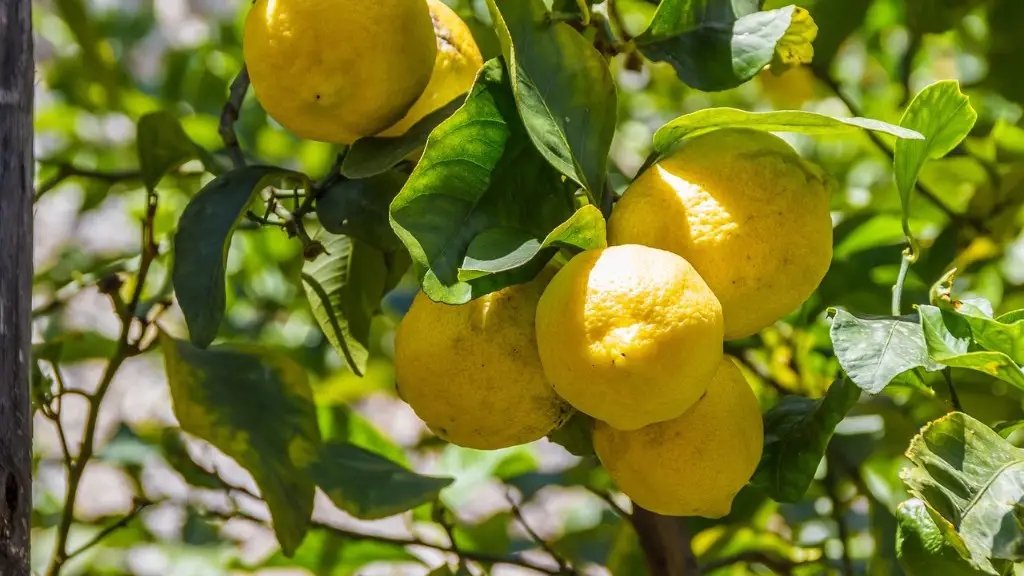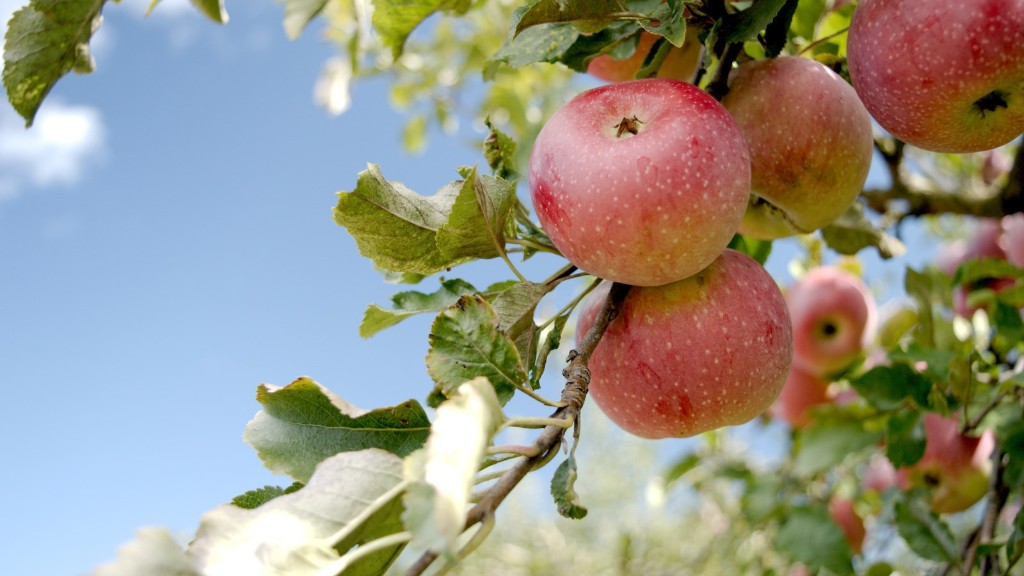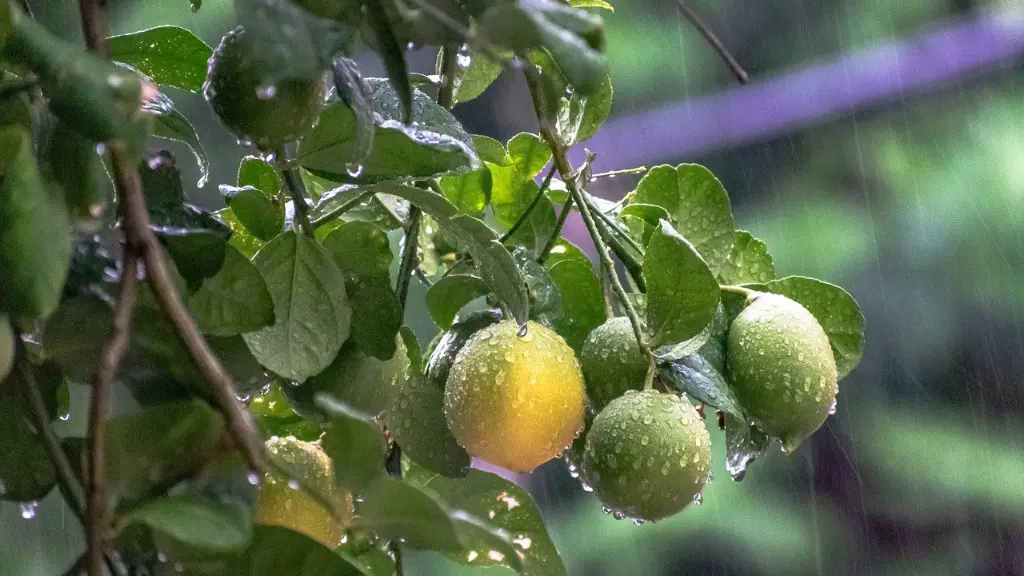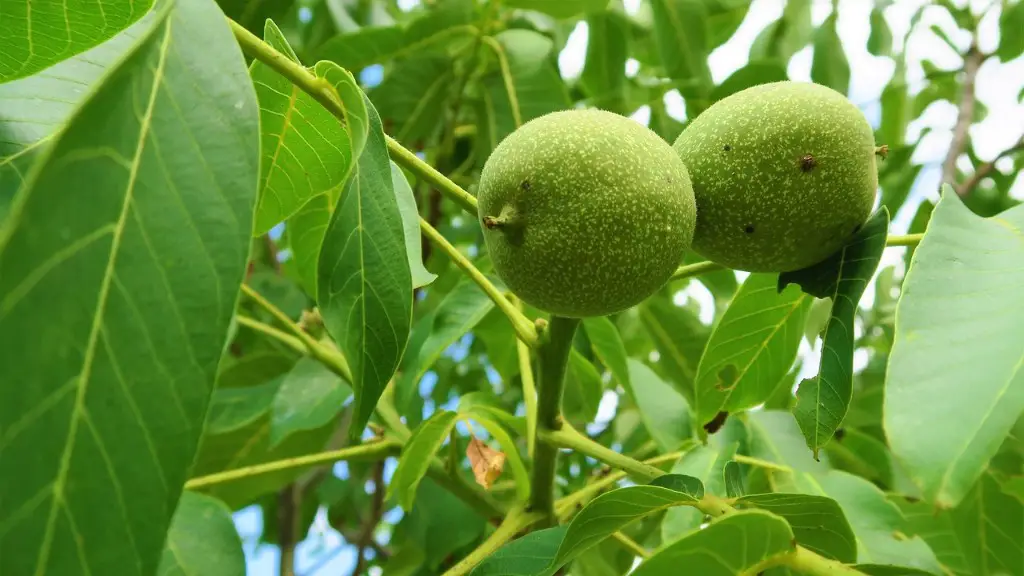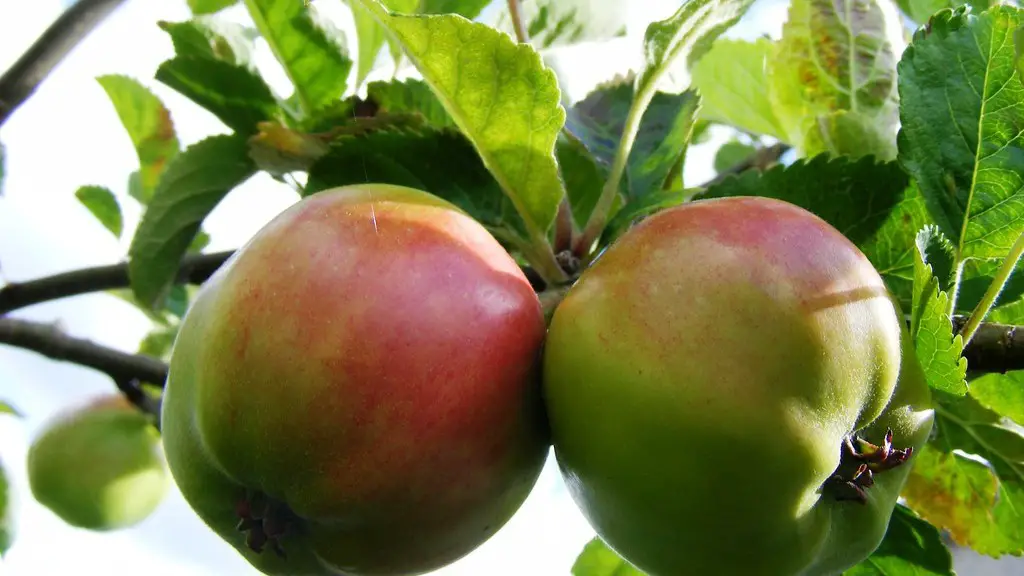When it comes to watering a Meyer lemon tree, it’s important to get the amount of water just right. Too much and you’ll drown the tree, too little and it won’t get the nutrients it needs. The key is finding the right balance.
Meyer lemon trees need a minimum of 1 inch of water each week — to be exact, that’s approximately 10 gallons of water. However, the amount of water really depends on the size and type of tree, soil type, climate, and the time of year.
It’s important to water your Meyer lemon tree deeply and thoroughly once a week — either with a garden hose or by hand — to ensure that the water penetrates the soil and goes all the way down to the roots. It’s also important to water the tree early in the day so the water has enough time to soak in before evening and any excess water can evaporate.
During periods of drought and high temperatures, you may need to water the tree more often. If the soil feels dry, it’s time to water. If it’s still moist, hold off for a few days and check again.
It’s also important to mulch around the base of the tree to maintain moisture. A layer of organic material, such as leaves, straw, or grass clippings, will help to keep the moisture from evaporating. For newly planted trees, mulch should reach at least a half-inch thick. For mature trees, a thicker layer will help.
Finally, you should check for signs of over-watering or under-watering. If the leaves on the tree are yellow and wilted, it could mean the soil is overly wet. And if the leaves dry and curl up, the tree is not getting enough water. Adjust your watering routine accordingly.
Soil Types and Water Retention
The type of soil your tree is planted in affects how much water it needs. Sandy soils, for example, do not retain moisture very well so they require more frequent watering than clay soils. It’s important to match the soil type to the type of tree, as well as to the tree’s individual needs.
If you’re growing a Meyer lemon tree in sandy soil, you’ll need to water it more frequently than a tree in clay soil. In sandy soil, the water will drain quickly and the tree won’t get enough moisture. It’s essential that the tree gets enough water so the soil does not dry out completely.
On the other hand, if you’re growing a Meyer lemon tree in clay soil, you’ll need to be careful not to overwater it. The soil will retain more water, leading to overly wet and soggy conditions. It’s important to check the soil often to make sure it’s not too wet.
For both clay and sandy soils, it’s critical to keep an eye on the tree’s watering needs and make adjustments as necessary. This will help ensure that the tree gets the right amount of water to thrive.
Environmental Factors and Water Needs
In addition to soil type, environmental factors such as temperature and rainfall also affect how much water a Meyer lemon tree needs. If the climate is consistently hot and dry, the tree will need more water than if the climate is cooler and wetter. In hot and dry climates, the tree will need to be watered more frequently and more deeply.
Similarly, if there is not enough rainfall, you’ll need to supplement with additional watering. The amount of rainfall the tree gets will vary by location, so you’ll need to keep an eye on the rainfall for your area and adjust your watering accordingly.
Finally, it’s important to remember that young trees need more water than mature trees. This is because young trees are still establishing their roots and need more frequent watering to ensure they get enough moisture. As the tree matures, it will become more resilient and will not need as much water.
Winter Watering
In general, Meyer lemon trees do not need as much water in the winter months as they do in the summer. The goal is to keep the soil slightly moist and avoid dehydration. There is no exact formula for how much water to give the tree, and the amount of water you give will depend on the climate, soil type and rainfall.
If temperatures are expected to drop below freezing, extra care should be taken to ensure the tree does not become dehydrated. Deeply and thoroughly water the tree before temperatures drop and then water again once the weather warms up.
It’s also important to note that young trees will need more water during the winter months than mature trees, as they will be more prone to dehydration. Monitor the tree closely and water it when necessary.
When it comes to winter watering, it’s important to remember that less is more. Too much water in the winter months can lead to root rot and other problems, so be sure to check the soil often and give the tree just enough water.
Frost Protection
Meyer lemon trees are temperate and can be sensitive to frost and freezing temperatures. If you live in an area that experiences cold winters, it’s important to take steps to protect your tree from frost and freezing temperatures.
One option is to cover the tree with burlap during cold spells. This will keep the tree warm and protect it from frost damage. Wrapping the tree in blankets can also help, as can using an electric blanket or heater in areas with extreme cold.
In addition to covering the tree, it’s important to make sure the tree is well-watered. Soak the soil thoroughly before temperatures drop and then again once temperatures rise. This will help insulate the tree and keep it safe from frost.
Finally, it’s important to monitor the weather and take steps to protect your tree as soon as possible. If temperatures are expected to drop, take measures to insulate the tree, and if frost is in the forecast, cover the tree with blankets or burlap.
Fertilizing and Watering
Fertilizing your Meyer lemon tree is an important part of its care. An annual application of fertilizer will give the tree the nutrients it needs to stay healthy and produce lemons. When fertilizing your tree, be sure to follow the instructions on the label for the amount and the timing of the application.
It’s also important to note that fertilizing and watering go hand in hand. Fertilizer can actually help the tree absorb more water, so it’s important to ensure that both are done correctly and at the right time. Water the tree first, then apply fertilizer, and then water again to help it get the most out of the fertilizer.
Finally, remember that a healthy and well-watered Meyer lemon tree will be more resilient and able to withstand drought or extreme temperatures. So keep an eye on its needs and make sure the tree is getting enough water and fertilizer throughout the year.
Pruning and Watering
Pruning a Meyer lemon tree is an important part of its care and will help it grow strong and healthy. Pruning helps keep the shape of the tree and can also help prevent diseases. The best time to prune a Meyer lemon tree is in the spring before it starts to flower.
Pruning should also be done in conjunction with watering. After pruning, water the tree deeply and thoroughly to help it recover from the stress of pruning. Also make sure to provide the tree with the necessary nutrients — a combination of fertilizer and mulch should do the trick. This will help the tree recover quickly and continue to flourish.
Finally, it’s important to remember that pruning and watering go hand in hand, and both should be done with care. Prune the tree when it is necessary and water when the soil is dry. This will help ensure the tree stays healthy and produces delicious lemons.
